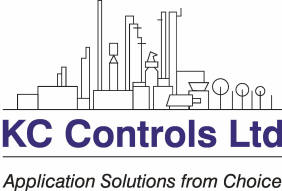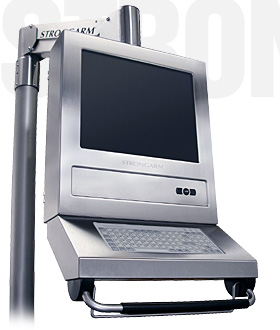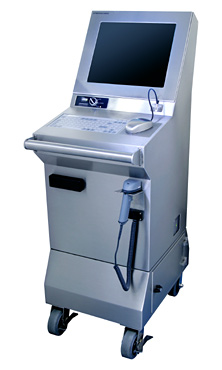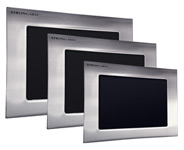|
Touchscreen
Technologies |
|
Resistive Touchscreen
(for 90% of all touchscreen applications)
The resistive touchscreen uses a glass panel overlay with a
uniform resistive coating. A polyester coversheet is tightly
suspended over the top of the glass, separated by small,
transparent insulating dots. The coversheet has a hard durable
coating on the outer side and a conductive coating on the inner
side. When the screen is touched, the conductive coating makes
electrical contact with the coating on the glass. The voltages
produced are the analog representation of the position touched.
The controller digitizes these voltages and transmits them to
the computer for processing.
Surface
Acoustic Wave Touchscreen
(safest touchscreen for hazardous area applications)
The Surface Acoustic Wave Touchscreen has a glass overlay with a
grid of transmitting and receiving piezoelectric transducers.
The touchscreen controller sends a 5 mHz electrical signal to
the transmitting transducer, which converts the signal into
ultrasonic waves within the glass. When the screen is touched, a
portion of the wave travelling across it is absorbed, thus
changing the received signal. The signal is then compared to a
stored reference signal, the change recognized, and a coordinate
calculated. The process happens independently for both the X and
Y axes. By measuring the amount of the signal that is absorbed,
a Z-axis is determined.
Infrared
Touchscreen
(for applications where touchscreen is exposed to extreme
abuse)
The Infrared Touchscreen relies on the interruption of an IR
light grid in front of the display screen. Integrated into the
display bezel is an opto-matrix frame that contains a row of IR-light
emitting diodes (LEDs) and photo transistors, each mounted on
two opposite sides to create a grid of invisible infrared light.
The opto-matrix frame is isolated from the outside environment
by an IR transparent barrier. The IR controller sequentially
pulses the LEDs to create a grid of IR light beams. When a
stylus, such as a finger, enters the grid, it obstructs the
beams. One or more of the phototransistors detects the absence
of light and transmits a signal that is the X and Y coordinates.
Because the infrared scanning is done in front of the display, a
bullet-proof, 3/8" thick polycarbonate window is installed
between the IR grid and the display itself. This window provides
a level of environmental protection for the electronics that is
unique to the infrared touchscreen technology.
Near
Field Imaging Touchscreen
(for applications that require accuracy, touch sensitivity,
and durability)
The Near Field Imaging (NFI) Touchscreen consists of two
laminated glass sheets with a patterned coating of transparent
metal oxide between them. An ac signal is applied to the
patterned conductive coating creating an electrostatic field on
the the surface of the screen. When a fingergloved or unglovedor
other conductive stylus comes in contact with the sensor, the
electrostatic field is disturbed. |









